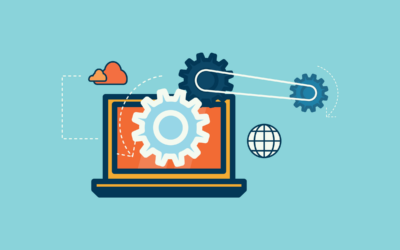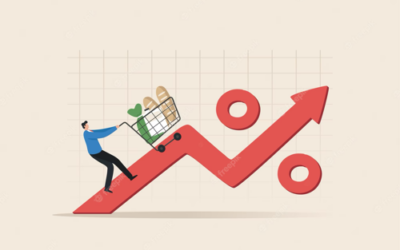Research shows that more than 75% of buyers and sellers prefer digital self-service and remote human contact rather than having face-to-face relationships. Moreover, buyers are more willing than ever to spend significant amounts of money remotely or through online sales channels. 77% Of B2B customers are willing to spend more than €50,000.
With B2B e-commerce one of the fastest-growing sales models, it is well on its way to becoming the new norm. A new generation of digital sellers is permanently shifting their organisational purchases online, resulting in a fundamental change in the way B2B companies do business.
What is B2B e-commerce?
B2B e-commerce, or business-to-business e-commerce, refers to the sale of products or services between businesses through an online sales portal. This purchase takes place on the internet between two business entities, rather than between a company and a consumer. B2B e-commerce transactions take place between manufacturers, wholesalers and distributors through corporate websites and online marketplaces.
Business-to-business e-commerce has grown exponentially in recent years and is poised to become the new standard in the B2B world. Although there are strategic differences between B2B and B2C e-commerce, it is similar in that customers in both areas want a seamless, personalised experience.
To stand out in the competitive world of e-commerce, B2B companies need to focus on creating an engaging, intuitive buying experience across channels and platforms, with an emphasis on informative content.
Explaining B2B e-commerce strategies
B2B e-commerce strategies focus on making the digital shopping experience as engaging and efficient as possible. In particular, B2B e-commerce strategies focus on allowing customers to self-manage their buying experience. That means providing information across different platforms and channels, setting up self-service options and ensuring that payment can be made securely and online. These and other tactics come together so that the customer is supported throughout the entire buying journey.
Difference between B2B and B2C strategy
As a business model, B2B e-commerce differs significantly from its business-to-consumer (B2C) counterpart. The difference between the two comes mainly from the audience and intent of the sale. Because B2B sells to a company to help fulfill its long-term goals, it usually has a longer buying cycle. Budgets are larger, purchases are more expensive and multiple stakeholders are involved, meaning buyers will take longer to determine whether the return on investment (ROI) is worth it. Because a contract for a B2B purchase usually lasts months or even years, there is more emphasis on building relationships than in B2C commerce.
In contrast, B2C focuses on selling a product or service to a consumer, which is generally shorter and more transactional in nature. A B2C consumer following a brand is not necessarily looking to build a close relationship with that brand. A consumer purchase is based more on a feeling. A B2C marketing strategy reflects that by emphasizing the pleasure or emotional aspect. A B2B purchase needs to be assessed from a more logical perspective, meaning that a B2B marketing approach focuses on providing other businesses with the necessary information to make an informed buying decision.
However, although there are major differences in marketing strategy, the B2C experience is starting to influence the B2B experience. Decision-makers in business purchasing decisions are also consumers outside work. They have experienced the conveniences of B2C commerce – omnichannel organisations offer flexible payment options, well-designed websites, personalisation and a seamless customer experience. These trends in B2C e-commerce are rapidly influencing buyer expectations
How can B2B find new customers and increase sales?
The first step for implementing marketing or sales strategies is to define the ideal customer profile or buyer personas. What type of business would benefit most from your product or service? It is important to define that first, so that all marketing and sales strategies are tailored to the buyers most likely to buy From there, B2B companies can find new customers and increase sales through various tactics:
- Turn your website into an educational hub: The B2B buying journey requires much more information than a consumer purchase. Providing relevant information about your product or service, as well as the industry itself – in various engaging formats can attract new buyers and even convince current customers to buy more.
- Offer discounts and promotions: Offering special offers on products and services can bring in a large number of new customers, strengthen your brand, develop customer loyalty and serve as a competitive advantage.
- Create a referral programme: Referrals are one of the most powerful ways to attract new customers. Ask your satisfied customers if they would be willing to review your product or service and consider offering an incentive as a reward.
- Embrace search engine optimisation (SEO): Using SEO strategies to ensure your company’s online presence ranks higher in search engines is crucial. It makes your business more visible online and easier to be found by potential customers.
- Increase your visibility: Whether it is attending trade shows, being active on social media platforms, cold calling, emailing, affiliate marketing or online advertising, make sure your company’s name is spread. Brand recognition is crucial to bring in those new customers and increase sales.
- Use your customer relationship management (CRM) software: CRM helps salespeople optimise their daily schedules and prioritise tasks to ensure customers are not ignored and important prospects are contacted on time.
Lead generation in B2B sales is a difficult and time-consuming process. However, thanks to technological advances, companies have countless ways to reach their potential customers.
ERP
ERP integration is crucial to the success of a B2B e-commerce business. A business running on multiple, separate systems or executing processes manually will not be able to create the desired, seamless customer experience. An ERP system provides integrated data, insights and efficiency needed to compete with today’s market.
The next generation of B2B buying is strongly heralded by tech-savvy age groups and evolving channel adoption. Today’s B2B buyers are taking charge of their buying journey and want the digital information and tools to help them every step of the way. B2B companies that fail to recognise this will quickly become obsolete.
NetSuite
NetSuite’s SuiteCommerce solution helps B2B companies deliver intuitive and information-rich e-commerce experiences. Merchants can create sites that engage business buyers, maximise their purchasing efforts and enable them to manage all aspects of their business relationship. Sites are cloud-based, optimised for mobile use and easy to manage, giving merchants the flexibility and adaptability needed to keep pace with their business.
With NetSuite, you have a complete solution. No need for integrations between separate systems. NetSuite’s natively unified e-commerce, inventory and order management, marketing, customer service and finance ensure that everything comes together smoothly for the ultimate competitive advantage in B2B e-commerce.




